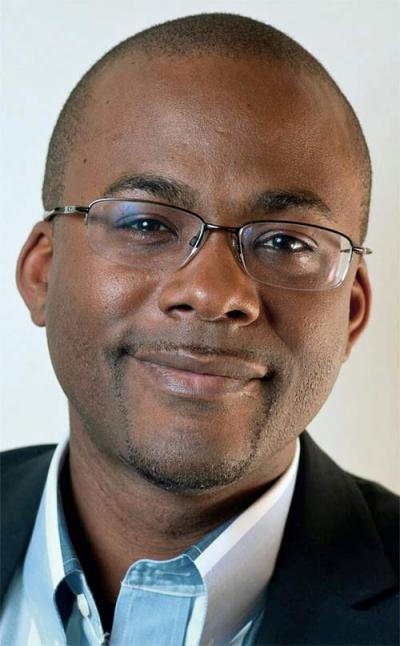

 Talk, conjecture and analysis have predicted a wireless spectrum crisis for years. The official word seems to project a culmination of dropped calls, slow loading of data, downright network access denials as impending by 2015. If so, then we should look at the current argument about how that additional spectrum can be disseminated to wireless carriers in a fair and balanced fashion.
Talk, conjecture and analysis have predicted a wireless spectrum crisis for years. The official word seems to project a culmination of dropped calls, slow loading of data, downright network access denials as impending by 2015. If so, then we should look at the current argument about how that additional spectrum can be disseminated to wireless carriers in a fair and balanced fashion.
 Some worrying signs are emerging in the USA. During the last decade I have questioned the economic viability of two parallel telecoms infrastructures. When these two network rollouts commenced no issue existed in relation to conflicting interests -- one delivered telephone services, the other broadcasting services. But this all began to change when it became possible to use the HFC network
Some worrying signs are emerging in the USA. During the last decade I have questioned the economic viability of two parallel telecoms infrastructures. When these two network rollouts commenced no issue existed in relation to conflicting interests -- one delivered telephone services, the other broadcasting services. But this all began to change when it became possible to use the HFC network
 40%, not 92%-120%. "Data consumption right now is growing 40% a year," John Stankey of AT&T told investors and his CEO Randall Stephenson confirmed on the investor call. That's far less than the 92% predicted by Cisco's VNI model or the FCC's 120% to 2012 and 90% to 2013 figure in the "spectrum crunch" analysis. AT&T is easily a third of the U.S. mobile Internet and growing market share; there's no reason to think the result will be very different when we have data from others.
40%, not 92%-120%. "Data consumption right now is growing 40% a year," John Stankey of AT&T told investors and his CEO Randall Stephenson confirmed on the investor call. That's far less than the 92% predicted by Cisco's VNI model or the FCC's 120% to 2012 and 90% to 2013 figure in the "spectrum crunch" analysis. AT&T is easily a third of the U.S. mobile Internet and growing market share; there's no reason to think the result will be very different when we have data from others.
 Every couple of years there's a new "hot threat" in security for which vendors abruptly tout newfangled protection and potential customers clamor for additional defense options. Once upon a time it was spyware, a few years ago it was data leakage, and today it's mobile malware. It's a reoccurring cycle, analogous to the "blue is the new black" in fashion -- if you fancy adopting a certain cynical tone.
Every couple of years there's a new "hot threat" in security for which vendors abruptly tout newfangled protection and potential customers clamor for additional defense options. Once upon a time it was spyware, a few years ago it was data leakage, and today it's mobile malware. It's a reoccurring cycle, analogous to the "blue is the new black" in fashion -- if you fancy adopting a certain cynical tone.
 In June 2009 we mused in these columns about Long Term Evolution standing for Short Term Evolution as wireless networks started to drown in a data deluge. It is January 2012 and we keep our heads above the mobile data deluge, even if barely, thanks to a gathering avalanche of LTE networks. Even the wildest prognoses proved conservative as the GSMA was betting on a more 'managed' progression...
In June 2009 we mused in these columns about Long Term Evolution standing for Short Term Evolution as wireless networks started to drown in a data deluge. It is January 2012 and we keep our heads above the mobile data deluge, even if barely, thanks to a gathering avalanche of LTE networks. Even the wildest prognoses proved conservative as the GSMA was betting on a more 'managed' progression...
 2011 has been a significant year for the technology sector globally. Information technology is touching more people in more ways than ever before. Developed markets will be considering a 2012 in which business innovation, competitiveness, and service differentiation are built on ubiquitous broadband, cloud computing, smarter mobile computing, and an increasing plethora of Internet-connected devices. By contrast, securing the technology future for developing markets demands that attention be placed on more fundamental issues.
2011 has been a significant year for the technology sector globally. Information technology is touching more people in more ways than ever before. Developed markets will be considering a 2012 in which business innovation, competitiveness, and service differentiation are built on ubiquitous broadband, cloud computing, smarter mobile computing, and an increasing plethora of Internet-connected devices. By contrast, securing the technology future for developing markets demands that attention be placed on more fundamental issues.
 Before anyone claims victory for the consumer in AT&T's abandonment of its "swinging for the fence" gambit to buy T-Mobile's market share and spectrum, consider what did not make many headlines this week. Both AT&T and Verizon substantially shored up their spectrum stocks with major deals with Qualcomm and several cable companies respectively. Solid hits for both carriers: not homeruns, but very strategic singles and doubles.
Before anyone claims victory for the consumer in AT&T's abandonment of its "swinging for the fence" gambit to buy T-Mobile's market share and spectrum, consider what did not make many headlines this week. Both AT&T and Verizon substantially shored up their spectrum stocks with major deals with Qualcomm and several cable companies respectively. Solid hits for both carriers: not homeruns, but very strategic singles and doubles.
 In a move to be celebrated by many of us with a VoIP background, the United States Federal Communications Commission (FCC) announced today the appointment of Henning Schulzrinne as Chief Technology Officer (CTO). As the release indicates, Henning's role as CTO will be to: ...guide the FCC's work on technology and engineering issues, together with the FCC's Office of Engineering and Technology.
In a move to be celebrated by many of us with a VoIP background, the United States Federal Communications Commission (FCC) announced today the appointment of Henning Schulzrinne as Chief Technology Officer (CTO). As the release indicates, Henning's role as CTO will be to: ...guide the FCC's work on technology and engineering issues, together with the FCC's Office of Engineering and Technology.
 If you missed attending or listening to the live stream of the US Federal Communication Commission's (FCC) workshop on the transition of the Public Switched Telephone Network (PSTN) to new technologies that was held last week on December 6th, the FCC has very nicely made a video recording available from their website for viewing... FCC Chairman Julius Genachowski also appeared briefly to provide a few comments.
If you missed attending or listening to the live stream of the US Federal Communication Commission's (FCC) workshop on the transition of the Public Switched Telephone Network (PSTN) to new technologies that was held last week on December 6th, the FCC has very nicely made a video recording available from their website for viewing... FCC Chairman Julius Genachowski also appeared briefly to provide a few comments.
 As handheld devices grow ever more sophisticated and demand for content-rich services such as mobile video increases, mobile data traffic is likely to continue growing at an explosive rate. This represents good news for the industry, but next-generation wireless technologies will need to be ready to meet the challenge and able to cope with these increased demands on bandwidth. A recent TD-LTE spectrum workshop looked at the potential of TD-LTE technology to take us on to the next stage of wireless communication.
As handheld devices grow ever more sophisticated and demand for content-rich services such as mobile video increases, mobile data traffic is likely to continue growing at an explosive rate. This represents good news for the industry, but next-generation wireless technologies will need to be ready to meet the challenge and able to cope with these increased demands on bandwidth. A recent TD-LTE spectrum workshop looked at the potential of TD-LTE technology to take us on to the next stage of wireless communication.